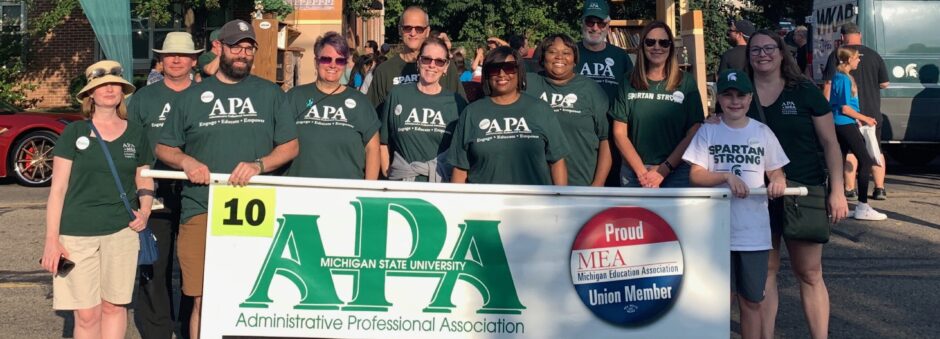In 1969, MSU Administrative-Professional Association was recognized by the MSU Board of Trustees and began bargaining for Administrative Professional employees. This original group of members included both supervisory and non-supervisory administrative-professional employees. The APA was one of the first bargaining groups recognized under the Public Employees Relations Act (PERA).
During the early 1980s, numerous members of the original APA bargaining group had concerns that the Association could not fairly represent both the interests of supervisors and the non-supervisor staff they supervised. After a judicial ruling under the Michigan Employment Relations Commission (MERC), the group was split into two units, separating the supervisors and non-supervisors. The APA was found to be an “inappropriate unit” for employee representation. During mid-contract, this ruling effectively left the benefits provisions of the contract in place, but ordered MSU to no longer recognize the APA as agent until certified by MERC as an appropriate unit.
In August 1985, the MSU Administrative-Professional Association (MSU-APA) was certified by MERC as a bargaining agent for all regular, full and part-time administrative and professional employees serving in a non-supervisory capacity. The wording and intent of the previously existing contract was inherited by the new organization. The new APA had almost completely new leadership since most of the executive board of the former association were supervisors. Bargaining for a new successor agreement began immediately.
In January 1986, a proposed contract was mailed to the approximately 600 member association. In May of the same year, the APA executive board examined the idea of affiliating the newly formed association with the Michigan Education Association (MEA), the state affiliate of the National Education Association (NEA).
One of the issues facing the APA was a large debt of over $50,000. As an independent union, the association would have to assess that debt to the continued membership as dues or a recurring special dues assessment. Affiliation with the MEA would absolve this debt to the newly formed organization and offer the non-supervisory staff at MSU state and national recognition. With this affiliation, the APA began building “political visibility” by meeting with state representatives and members of he house and senate who appropriate funds for higher education.
Today, the MSU-APA boasts approximately 2,400 non-supervisory staff members. We include more than 300 classifications and job titles. We work in over 200 campus buildings and are spread over several geographic areas in Michigan and abroad. We are part of the MSU Coalition of Labor Organizations, which negotiates our collective health care agreement as well as issues affecting the unionized workforce as a whole.
MSU-APA continues to represent the rights and working conditions of non-supervisory personnel at Michigan State University. Many of our executive board members represent the local affiliate on the state and national level by holding elected seats to the MEA Board of Directors, NEA Board of Directors, as well as Region Representatives and delegates to the annual state and national representative assemblies.
